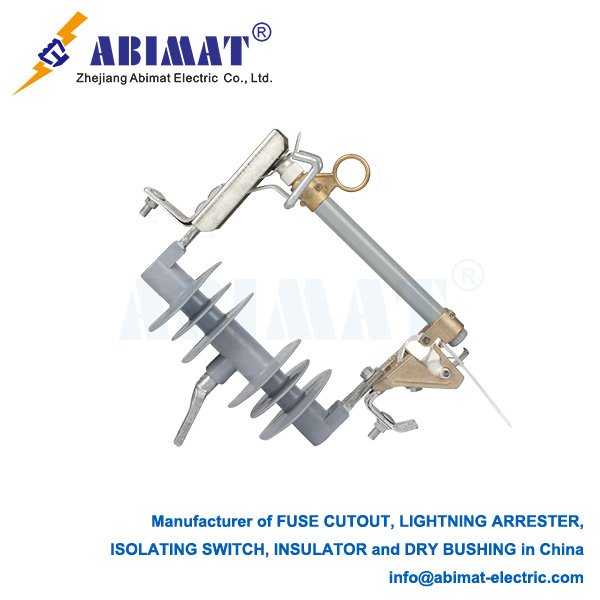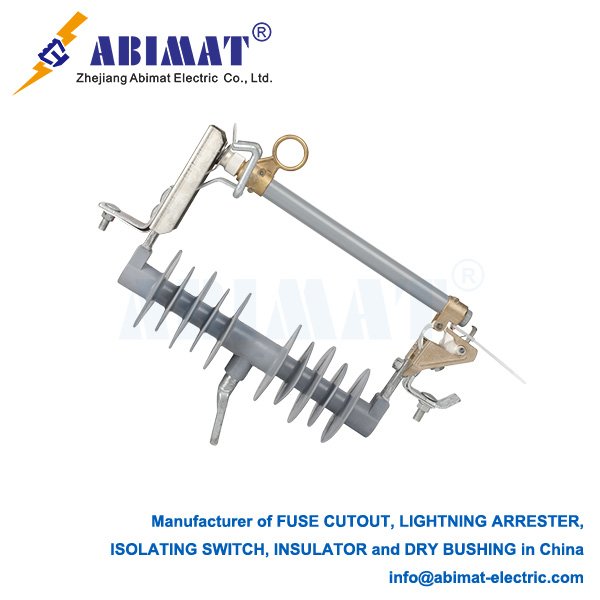High Voltage Cutout: A Critical Overhead Line Protector
A high voltage cutout—people often call it a fused cutout or drop-out fuse—is a basic, single-phase protective device. It’s widely used in overhead electrical distribution systems. These systems usually work at voltages between 2.4 kV and 38 kV. The cutout has two main, important jobs.
First, it protects against overcurrent. It acts as the main fuse for things like distribution transformers, capacitor banks, feeders, or tap lines. When there’s a lasting overcurrent—this happens from faults like short circuits or bad overloads—the fuse link inside the cutout melts, or “blows.” This melts safely stops the fault current.
Second, it provides a visible break in the circuit. When the fuse works, or when someone uses a hot-stick to operate it by hand, the fuse holder (or “door”) swings down into an “open” position. This position clearly shows the circuit has no power downstream. It also lets workers safely isolate the area for maintenance or repair.
Let’s look at its key parts and how it works. The insulator is one part. It holds the cutout up and keeps live parts separate from the grounded mounting bracket—this bracket is usually attached to a utility pole’s crossarm. Insulators are made of strong polymer or porcelain.
The fuse holder (also called carrier or door) is another part. It’s a conductive tube that moves. It holds the fuse link and connects the upper contact (linked to the line) and lower contact (linked to the load side, like a transformer).
The fuse link is a replaceable part inside the holder. It has a calibrated fusible element—often silver or tin-coated copper wire. This element sits in arc-quenching material, like boric acid and silica sand. When overcurrent lasts, the element melts. The arc from this melts the quenching material, making gases that quickly put out the arc.

The cutout also has mounting and contacts. The whole assembly is firmly attached with a bracket. Upper and lower contacts are the points where electricity connects.
High voltage cutouts are essential for many reasons. They only isolate the faulty part, so outages don’t affect too much. They keep workers safe by showing an open point and letting people ground the isolated section. They’re also cheap and simple—more so than circuit breakers for many distribution uses. And they’re reliable, with high interrupting ratings (usually 10kA symmetrical or higher).
You’ll mostly find them protecting distribution transformers and capacitors. They also help section off overhead feeders, so faults are isolated and the system works better.
In short, the abimat high voltage cutout is a device you can’t do without in overhead power distribution. It combines reliable overcurrent protection (from the fuse) and clear visible isolation. This makes it a key part of safe and efficient grid operation.


